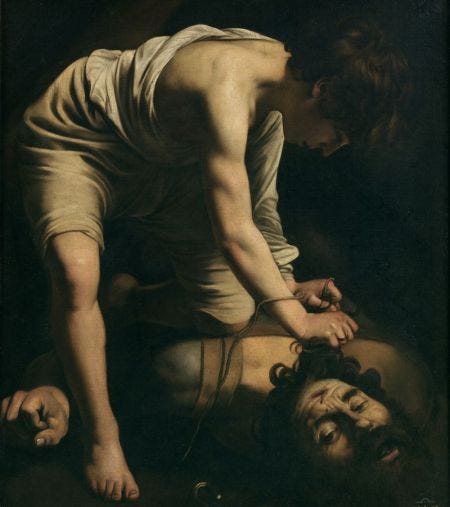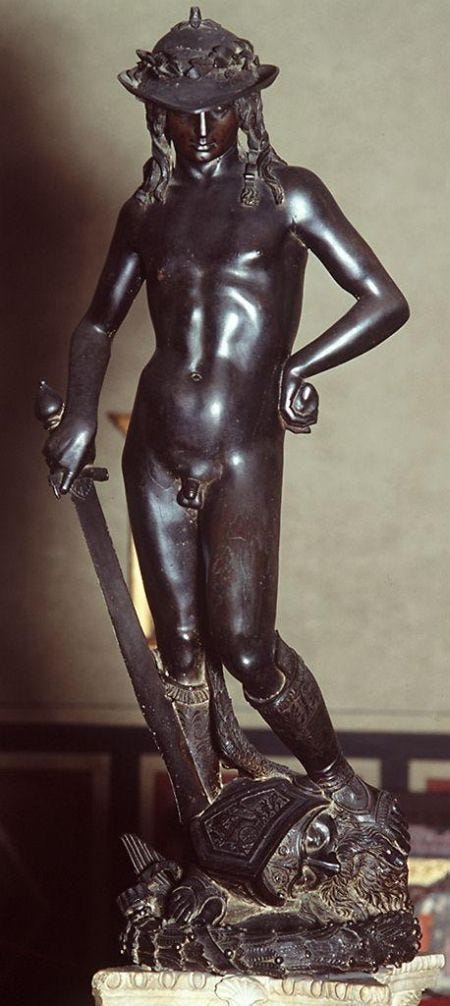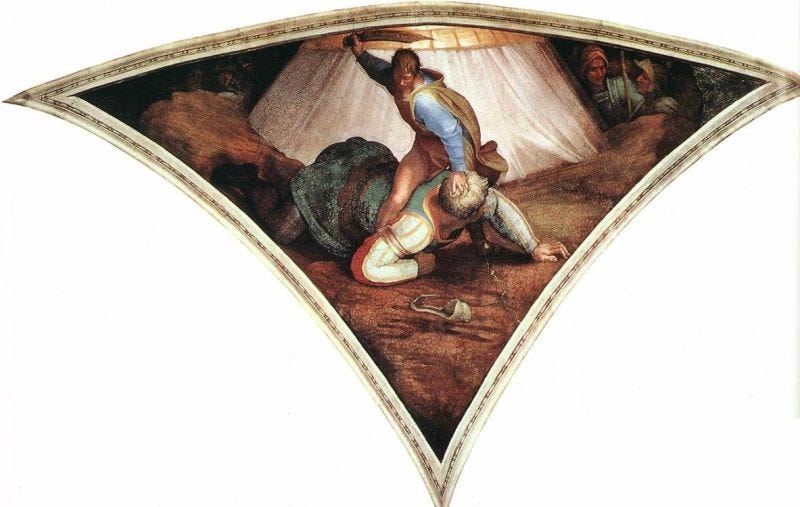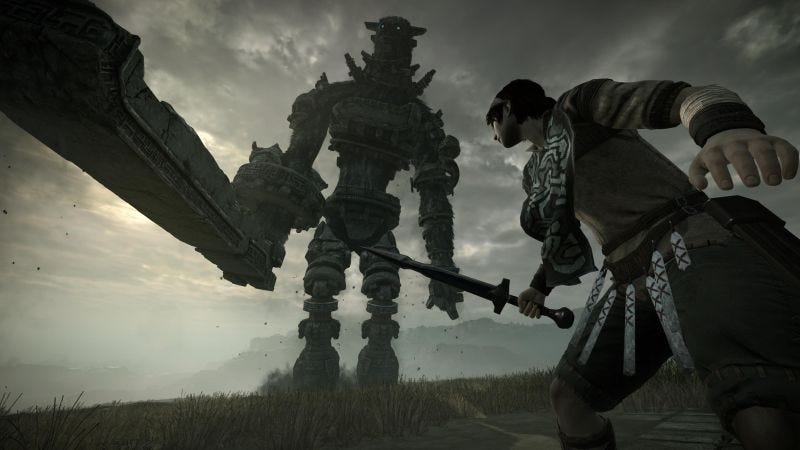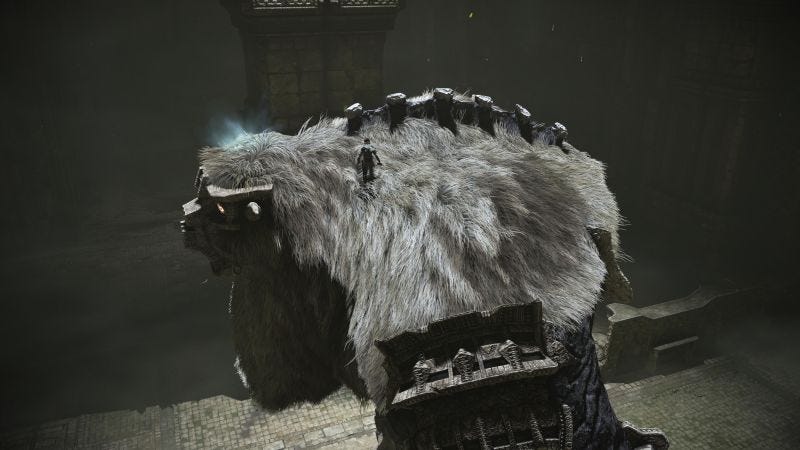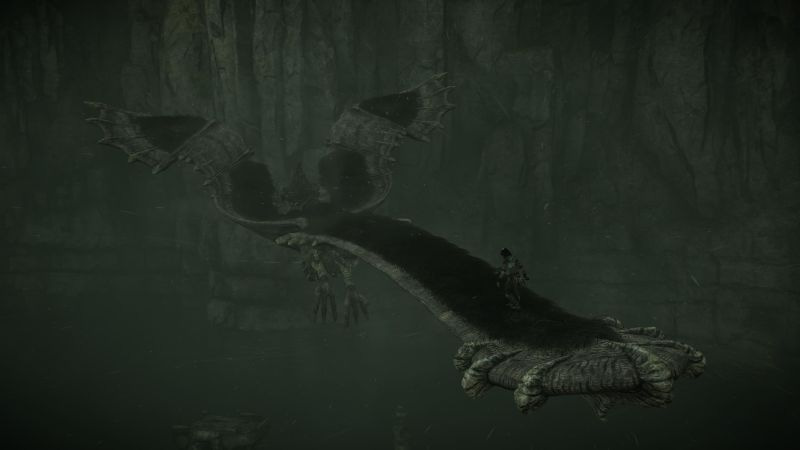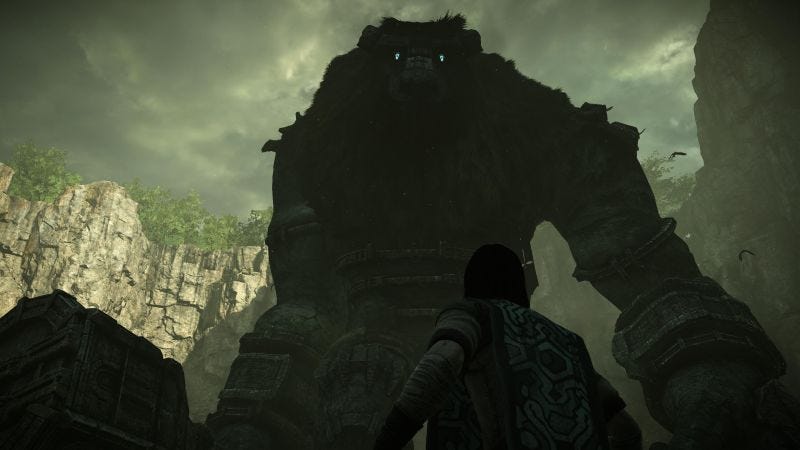David, Goliath, and Shadow of the Colossus
A divinely beautiful game that flips our religious certainties on their head #mythology #painting #sculpture #videogame
Welcome back to Artcade, the place where video games rub elbows with the fine arts and—shockingly—don’t seem worlds apart. Maybe they’re just different dialects of the same language. Who can say? Speaking of languages: if you’re craving a deep dive into our quirky terminology, the About page is only a click away—but enough foreplay, let’s jump straight into today’s episode. Enjoy the read!
Caravaggio (1597-1598) David and Goliath [Painting] [Oil on canvas] [116 x 91 cm] Museo del Prado, Madrid
Donatello (1440 ca.) David [Sculpture] [Bronze] Museo Nazionale del Bargello, Florence
Michelangelo Buonarroti (c. 1508) David and Goliath [Painting] [Fresco] [570 x 970 cm] Sistine Chapel, Vatican Museums, Rome
The David-and-Goliath showdown is one of the Bible’s greatest hits: a shepherd boy fells a giant with nothing but a sling and unshakable faith. It’s the ultimate underdog story—catnip for storytellers and marketers alike. (Slogan of the day: “With God on your side you beat anybody.”)
Fumito Ueda (2018) [2001] Shadow of the Colossus (Remake PS4) [ワンダと巨像 Wanda to Kyozou] [Video game] [Action-adventure] [7 Hours] (Playstation 5) [Playstation 2/3/4] Sony Computer Entertainment
In Shadow of the Colossus the player hauls Mono’s body into the Forbidden Lands and cuts a deal with a mysterious entity: slay sixteen colossi and she’ll live again. Some of those stone titans look vaguely human, others resemble oversized beasts, and every clash feels hopeless—right up until the colossus falls and reveals its vulnerability.
Here the biblical script is flipped. The colossi are peaceful—until we show up. Morally speaking, the kid is the aggressor, the giants the victims, and our direct involvement in each killing cranks up the emotional punch of this moral short-circuit.
Information Desk:
Caravaggio painted his own face onto Goliath. X-rays show the mouth was originally wide-open, eyes staring at us—a self-portrait in mid-decapitation. This wasn’t the only time Caravaggio gave Goliath his own features—just compare the canvas shown here with his David with the Head of Goliath, now in Rome’s Galleria Borghese.
“Are video games art?” Shadow of the Colossus is Exhibit A in that debate—L’Indiscreto has a great piece on it (Italian).
Donatello’s bronze David once sported gilded details; a faithful replica shows the original bling.
My last two coins
We grow up rooting for David: sling, stone, tyrant down, everyone cheers. Then Shadow of the Colossus barges in and asks the question nobody raised in Sunday school: what if David is the bad guy? When a colossus crashes to the ground I can’t celebrate; I clutch the controller, wait for the vibration to stop, and think, What have I done?
Yet—paradoxically—that very unease makes me all the more certain of its greatness. Ask me about my favorite game ever? Shadow of the Colossus. A title that proves video games can reach the heights of fine art? Same answer. Looking for a must-play you might have missed? You guessed it. The game world is sparse, the controls a bit rough—even in the gorgeous remake—but no other game plants a doubt in the player’s mind so effectively. And let’s be honest: what’s more powerful than doubt?
Until the next episode, ciao!




